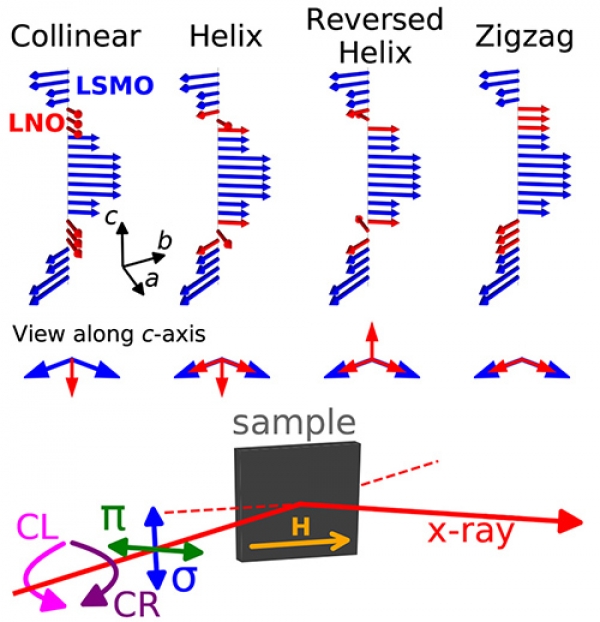Interfaces between complex oxide materials exhibit remarkably rich physics that are very promising for future applications in tomorrow’s electronics, i.e. spintronics.
Particularly fascinating is their proven ability to host new types of emergent magnetic order that do not exist in either of the bulk constituents. Scientists from Brookhaven National Laboratory (USA), SEXTANTS beamline and Argonne National Laboratory (USA) showed that a magnetic helix exists in the nickelate heterostructure [LaNiO3]3/[La2/3Sr1/3MnO3]9.
The physics of interfaces between complex oxide materials are driven by the interplay of various types of charge, orbital, and spin couplings. These properties represent a challenge to our understanding of electron correlations, as well as an opportunity for exploitation in spintronic devices.
Interfacial effects in transition metal oxide heterostructures can drive novel magnetism that is not observed in their bulk constituents. Here, the international scientific team used resonant soft x-ray techniques to demonstrate that a helical magnetic structure occurs in the nickelate layers of the [LaNiO3]3/[La2/3Sr1/3MnO3]9 heterostructure.
By measuring the Ni 3d electronic configuration, the scientists suggest that the observed helical magnetic structure is derived from a spin density wave instability in the nickelate layer. This work thus provides important hints into how to drive new forms of magnetism in transition metal oxide heterostructure.
These results are published in the "Rapid Communications" section of the Physical Review B journal, and are part of the “Editors’ suggestion” of this journal.

Figure. Top and middle: Possible magnetic structures of the LaNiO3 layer in (LSMO)9 /(LNO)3. The coupling angle γ corresponds to the angle between two (LSMO)9 layers.
Bottom: Experimental geometry used in both XRMR and RIXS measurements reported in this article.
